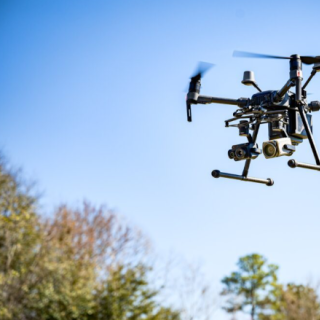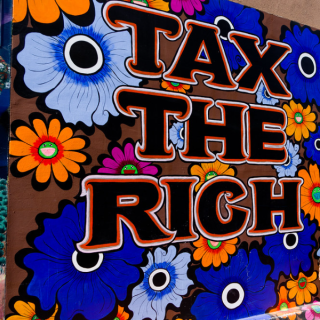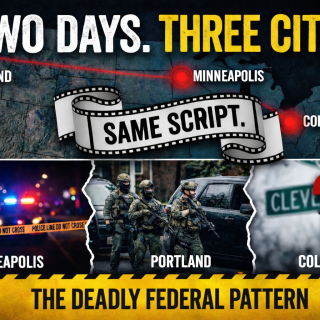If the whole state of Vermont, the cities of San Francisco, Los Angeles, Phoenix, Denver, Seattle, Minneapolis, Albuquerque, Davenport, Iowa, and even Oberlin, Ohio can change the name of Columbus Day to Indigenous Peoples Day – could Columbus, Ohio be far behind? Sadly, yes.
Following the Ameriflora controversy in 1992 – the international flower festival at Franklin Park celebrating 500 years since Christopher Columbus invaded North America – Native Americans descended on Columbus City Council playing drums and chanting. Council members refused to change the name of Columbus Day, but as an immediate concession to the victims of genocide initiated by Columbus and to make the Native Americans go away, agreed that a week starting on Columbus Day would be designated Indigenous People’s Week. But we never heard anything about that again.
There were some victories: our city hasn’t held a Columbus Day parade since the 90s, the Santa Maria is thankfully gone, and activists successfully prevented a Christopher Columbus statue made by a Russian sculptor, six feet taller than the Statue of Liberty, from being erected downtown.
Let’s see what’s left: bring down the Christopher Columbus statues and rename Columbus Day, and ultimately the city. As a general axiom, cities should not be named after genocidal mass murderers. That’s why those who believe in human rights and democracy celebrated when the statues of Hitler and Stalin were toppled.
George Orwell, ever insightful on the issue of history and power of controlling the narrative, said: “He who controls the past controls the future. He who controls the present controls the past,” 1984.
There’s really no debate about the brutal slaughters of indigenous peoples in the Americas by Columbus’ sailors. The priest who sailed with Columbus, Bartolome De las Casas, kept a journal recording the infamous explorer’s actions: “A boat could sail from the Bahamas to Haiti without a compass or chart, guiding itself solely by the Trail of the dead Indians who had been thrown from the ships,” and “The Spaniards forced their way into Native settlements, slaughtering everyone they found there, including small children, old men, pregnant women, and even women who had just given birth. They hacked them to pieces, slicing open their bellies with their swords as though they were so many sheep herded into a pen. They even laid wagers on whether they could manage to slice a man in two at a stroke, or cut an individual’s head from his body, or disembowel him with a single blow of their axes. They grabbed suckling infants by the feet and, ripping them from their mother’s breasts, dashed them headlong against the rocks.”
Christopher Columbus was also responsible for starting the slave trade between the old world and the new world. When he couldn’t extract precious metals and other riches from some of the poorest people on the planet, he stuffed 500 or so native people into the hull of his ship to sell as slaves in Spain. An estimated 12 made it to Spain alive.
So, we’ve named our city after a man who was involved with slaughter, the slave trade, rape and pillaging. Some, like Donald Trump, admire the slave trader so much that in the 90s, he lobbied to erect the massive Russian Christopher Columbus statue in midtown Manhattan.
We in the North feel compelled, rightfully, to remove Confederate statues in the Confederate and slave states – but don’t see anything wrong with celebrating a holiday and naming our city after a European conquistador who founded the slave trade that culminated in the U.S. Civil War.




